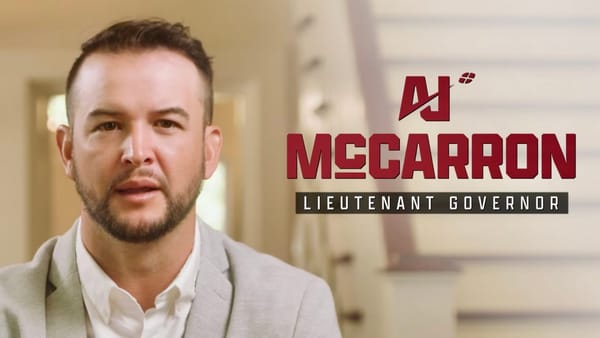You’ll Disturb the Markets
Part II of the “Pattern of Control” series by Alicia Boothe Haggermaker

Guest Opinion by Alicia Boothe Haggermaker
“🤫 You’ll disturb the markets.”
The Price of the Cure
Cancer treatment is a trillion-dollar industry—yet for all its funding and pink-ribbon parades, the “war” on cancer keeps looking more like a long-term investment portfolio. The business model rewards chronic management, not resolution. Chemotherapy drugs are designed to prolong survival, not restore wellness; hospitals earn more from repeat patients than recovered ones. When profit is tied to pathology, healing becomes bad for business.
The Economics of Illness
What we call “healthcare” is an economy of dependency. The longer you stay unwell, the more the system thrives. Illness isn’t just treated—it’s monetized. The modern medical-industrial complex depends on a never-ending influx of patients, just as our energy grid depends on constant consumption. Both call it sustainability, when what they really mean is stability of profit.
The Marketing Team Debacle
The true miracle of modern medicine isn’t the cure—it’s the branding. Ribbons, hashtags, and “awareness months” transform suffering into merchandising. Each campaign becomes a PR event that disguises stagnation as progress. Imagine any other industry celebrating itself for decades while its product still doesn’t work. That’s not awareness—it’s advertising.
The Forgotten Apothecary
Before the lab coats and the grants, healing came from gardens. Plant wisdom was practical, local, and accountable. Then the same institutions that criminalized healers rebranded their knowledge as innovation. Herbal medicine wasn’t outdated—it was outsourced. Now, when a plant shows promise, the process is always the same: isolate the compound, patent it, ban the natural source, and trademark the cure.
The Script Repeats
We keep filming our own diagnosis.
The Great Gatsby was never just about romance and money—it was about worshipping the illusion of freedom while rotting in a cage of class. The mansion, the parties, the longing across the bay—it’s the same story we live now: excess as anesthesia, glamour masking decay.
Then there’s The Goonies—kids chasing a myth beneath the wreckage of their foreclosed town. They don’t wait for permission; they follow the map themselves, crawling through tunnels carved by greed until they find something unbought: courage, friendship, and a sense of home.
Between Gatsby’s glitter and the Goonies’ mud lies the whole arc of the American experiment—what happens when innocence realizes it’s been sold the costume of wealth instead of the substance of worth.
We’ve been watching the warning on repeat, mistaking it for entertainment.
The Sound of Silence: The Cures That Don’t Sell
There are technologies that can destroy tumors with sound—no scalpel, no chemo, no radiation. Histotripsy and oncotripsy use focused acoustic pulses to break apart cancer cells through mechanical resonance. Peer-reviewed trials show non-invasive tissue disintegration with minimal collateral damage.
Yet outside academic journals, these breakthroughs barely echo. Why? Because they threaten every system built on endless treatment. There’s no recurring prescription for “frequency.” No patent for vibration. No billing code for healing that leaves the hospital empty.
Knowledge without a lobby is silence.
“And the people bowed and prayed / To the neon god they made...” — Simon & Garfunkel, “The Sound of Silence”
What Happened to Rife and the Cymatic Machines
In the 1930s, Royal Raymond Rife claimed to cure diseases by identifying their “mortal oscillatory rate”—the exact frequency that shattered pathogens. He demonstrated it, filmed it, and invited doctors to witness it. Then came raids, destroyed equipment, and revoked licenses. The American Medical Association and early FDA called it “quackery.” Decades later, the same principles reemerged as “ultrasound ablation”—patented and profitable. The physics never changed; only the ownership did.
Infrastructure as Prescription
The reflex is identical across industries: over-invest, over-promise, then silence the safety debate. Smart meters, digital water grids, and “smart cities” are marketed as progress, but their real function is to monetize dependency. Once billions are sunk into the hardware, admitting flaws would collapse shareholder confidence—so discussion of radiation, data leaks, or ecological impact is labeled misinformation.
And if the fallout harms you? Don’t worry, there’s a pill for that. A little anxiety from constant EMF exposure? Take this. Water contamination traced back to the same “innovation” contracts? Take that.
They’ve industrialized the feedback loop: create the problem, sell the treatment, bury the evidence—always “for your safety,” of course.
It’s the modern form of the Hegelian dialectic—manufacture crisis, steer outrage, and market the cure. The genius of the system is that it doesn’t need conspiracy when conditioning will do. People defend the very machinery that drains them, mistaking the shock collar for protection.
Closing Reflection
The pattern isn’t about science—it’s about silence. Every time humanity rediscovers resonance, whether in sound, water, or soil, the same machinery drowns it out. The real danger to the market isn’t misinformation—it’s independence. And the moment we stop mistaking profit for progress, the silence ends.
Alicia Boothe Haggermaker is a lifelong resident of Huntsville, Alabama, and a dedicated advocate for health freedom. For more than a decade, she has worked to educate the public and policymakers on issues of medical choice and public transparency. In January 2020, she organized a delegation of physicians and health freedom advocates to Montgomery, contributing to the initial draft of legislation that became SB267.
Opinions do not reflect the views and opinions of ALPolitics.com. ALPolitics.com makes no claims nor assumes any responsibility for the information and opinions expressed above.
References
Xu, Z., et al. (2022). “Histotripsy Tumor Ablation in a Subcutaneous Murine Melanoma Model.” Frontiers in Oncology.
Parsons, J. E., Cain, C. A., et al. (2017). “High-Intensity Focused Ultrasound and Histotripsy in Oncology.” Cancer Letters.
Johnson, B. (2018). The Rife Frequency Handbook: Bioresonance and the Hidden History of Frequency Medicine.
Cravotto, G. & Cintas, P. (2012). “Power Ultrasound in Organic Synthesis: Moving Cavitational Chemistry from Academia to Industry.” Chemical Society Reviews.




